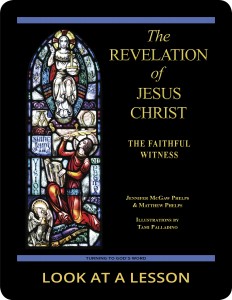bow
 In the book of Genesis 9:8–15 (NABRE), God makes a covenant with Noah that he never again will seek to destroy humanity and all other creatures by means of flood—perhaps not the most comforting of promises considering how many other options God has available. As a sign of this covenant, God sets his bow in the sky in the form we now know as a rainbow.
In the book of Genesis 9:8–15 (NABRE), God makes a covenant with Noah that he never again will seek to destroy humanity and all other creatures by means of flood—perhaps not the most comforting of promises considering how many other options God has available. As a sign of this covenant, God sets his bow in the sky in the form we now know as a rainbow.
The bow portion of this term from the Hebrew קֶשֶׁת (qeset) means “bow” in the sense of archery. A rainbow, then, is an inherently violent thing since the underlying imagery is that of a weapon—though the rainbow in the sky serves as a signal that God has put down his arms and made peace.This is an especially interesting concept as there are a few other places in the Bible where God is described as having taken up his bow, most notably in the book of Revelation 6:2 (NABRE).
Considering the context behind God putting down his bow in the book of Genesis, what do you think it means for humanity and the world when God chooses to take it back up again at the end of time?
you also may like our study of the book of Revelation
 The Revelation of Jesus Christ: The Faithful Witness, a 23-lesson Catholic Bible study with an imprimatur, examines ways in which our traditional Christian view of heaven is built on Hebrew apocalyptic visions recorded in the Old Testament. This recently revised study includes maps and additional commentary and takes a close look at the role of the prophets in present-day Christianity. Illustrations by Tami Palladino depict the often-misunderstood images in the book of Revelation. Click on the book’s cover to view a sample lesson.
The Revelation of Jesus Christ: The Faithful Witness, a 23-lesson Catholic Bible study with an imprimatur, examines ways in which our traditional Christian view of heaven is built on Hebrew apocalyptic visions recorded in the Old Testament. This recently revised study includes maps and additional commentary and takes a close look at the role of the prophets in present-day Christianity. Illustrations by Tami Palladino depict the often-misunderstood images in the book of Revelation. Click on the book’s cover to view a sample lesson.
 Click on the picture of the statue of Moses with horns (above) to learn more about Lost in Translation. A new entry is archived each Monday. Contact us to receive Lost in Translation by email every week. You may use any of the contact links on our website to ask Matthew a question.
Click on the picture of the statue of Moses with horns (above) to learn more about Lost in Translation. A new entry is archived each Monday. Contact us to receive Lost in Translation by email every week. You may use any of the contact links on our website to ask Matthew a question.
